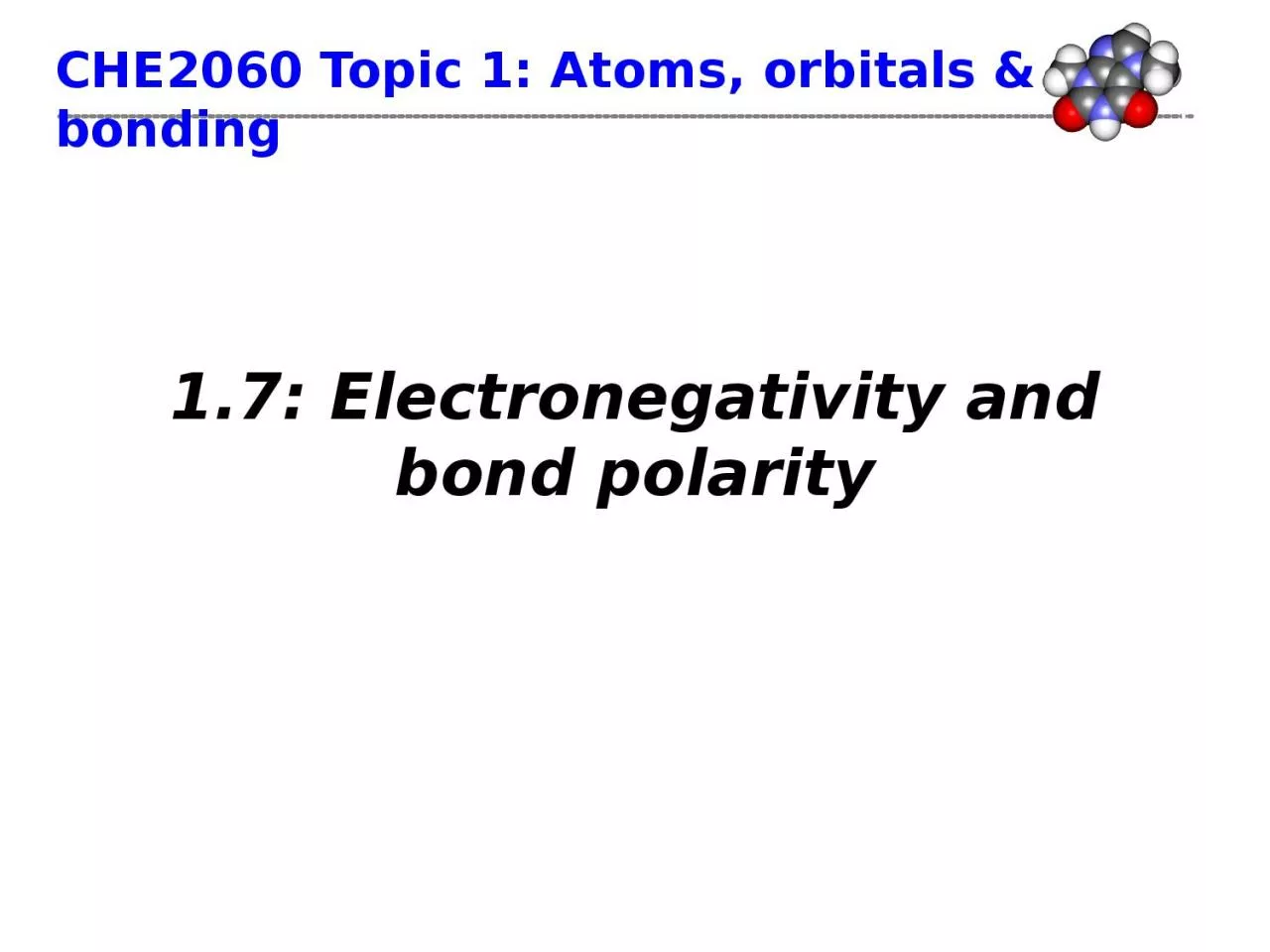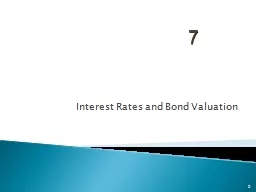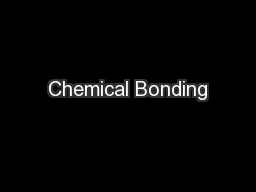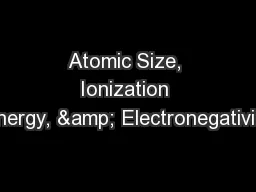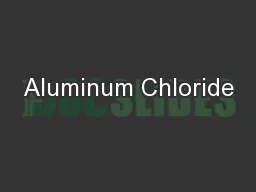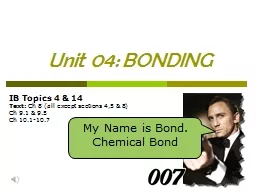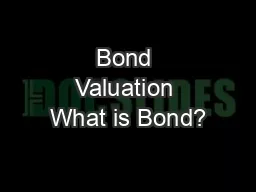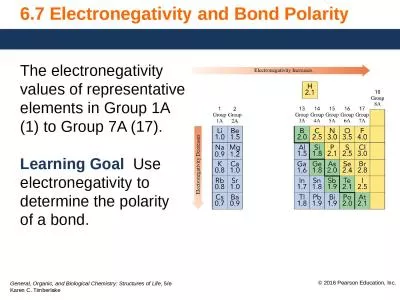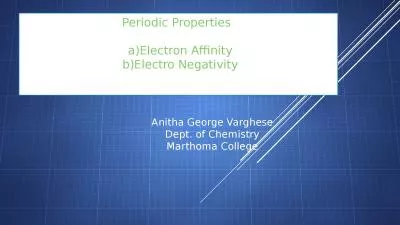PPT-1.7: Electronegativity and bond
Author : piper | Published Date : 2023-11-12
p olarity CHE2060 Topic 1 Atoms orbitals amp bonding Bond polarity amp electronegativity Covalent bonds can be either polar or nonpolar depending on how equally
Presentation Embed Code
Download Presentation
Download Presentation The PPT/PDF document "1.7: Electronegativity and bond" is the property of its rightful owner. Permission is granted to download and print the materials on this website for personal, non-commercial use only, and to display it on your personal computer provided you do not modify the materials and that you retain all copyright notices contained in the materials. By downloading content from our website, you accept the terms of this agreement.
1.7: Electronegativity and bond: Transcript
Download Rules Of Document
"1.7: Electronegativity and bond"The content belongs to its owner. You may download and print it for personal use, without modification, and keep all copyright notices. By downloading, you agree to these terms.
Related Documents

